Nepal Riots 2025: Understanding the Crisis That Shook the Himalayan Nation
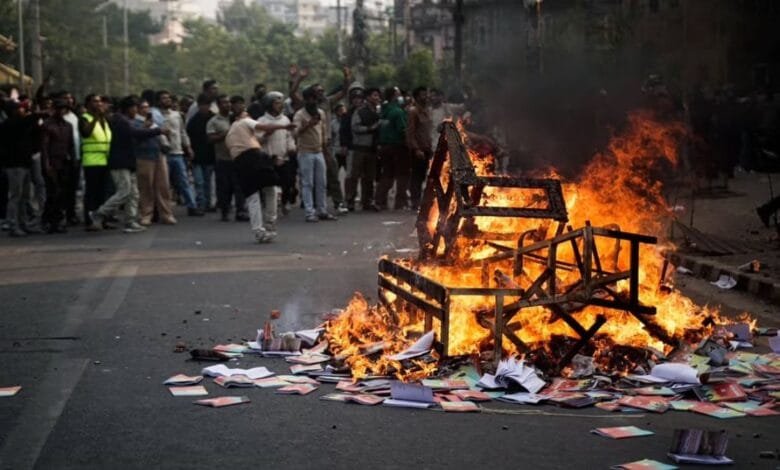
Nepal is experiencing its most severe civil unrest in decades, with deadly riots erupting across the country in September 2025. What began as protests against social media restrictions has evolved into a broader uprising against government corruption and economic stagnation. This comprehensive analysis examines the causes, events, and implications of Nepal’s current crisis.
What Sparked the Nepal Riots?
The Social Media Ban Trigger
The immediate catalyst for the riots was the Nepalese government’s decision on September 4, 2025, to ban 26 major social media platforms, including:
- X (formerly Twitter)
- YouTube
- Signal
- Snapchat
- TikTok
The government justified this action by claiming these platforms failed to register under new regulatory requirements. However, critics viewed the ban as an attempt to suppress free speech and control information flow.
Deeper Root Causes
While the social media ban ignited the protests, the unrest stems from fundamental issues plaguing Nepal:
Economic Challenges:
- High unemployment rates, particularly among youth
- Limited job opportunities in the formal sector
- Slow economic recovery post-COVID-19
- Rising cost of living amid stagnant wages
Political Corruption:
- Widespread corruption among political elites
- Lack of transparency in government operations
- Public frustration with ineffective governance
- Broken promises of economic development
Youth Disillusionment:
- Growing disconnect between young Nepalis and traditional political parties
- Limited opportunities for political participation
- Educational system not aligned with job market needs
Timeline of Events: How the Crisis Unfolded
September 4, 2025: The Ban Begins
The government announces the shutdown of major social media platforms, citing regulatory non-compliance.
September 5-7, 2025: Initial Protests
Small-scale demonstrations begin in Kathmandu and other major cities, with protesters demanding restoration of internet freedoms.
September 8-9, 2025: Escalation
Protests intensify as more young people join demonstrations. Police begin using crowd control measures including tear gas.
September 10, 2025: Violence Erupts
The situation turns deadly as clashes between protesters and security forces result in multiple casualties. Government buildings become targets of vandalism.
The Human Cost: Casualties and Impact
The Nepal riots have exacted a heavy toll:
- Fatalities: At least 19-22 people confirmed dead
- Injuries: Hundreds wounded in clashes with police
- Property Damage: Government buildings, police stations, and politicians’ residences set ablaze
- Economic Impact: Business disruptions and tourism concerns
These numbers represent Nepal’s worst civil unrest since the end of the Maoist insurgency in 2006.
Gen Z Leadership: A New Political Force
Characteristics of the Movement
The current protests are notably led by Nepal’s Generation Z, distinguished by:
- Digital Nativity: Heavy reliance on social media for communication and organization
- Global Awareness: Exposure to international movements and democratic ideals
- Economic Anxiety: Facing uncertain job prospects and economic instability
- Political Independence: Less loyalty to traditional political parties
Protest Methods and Organization
Young protesters have employed various tactics:
- Coordinated street demonstrations
- Attempts to storm parliament buildings
- Use of alternative communication platforms
- Symbolic targeting of government infrastructure
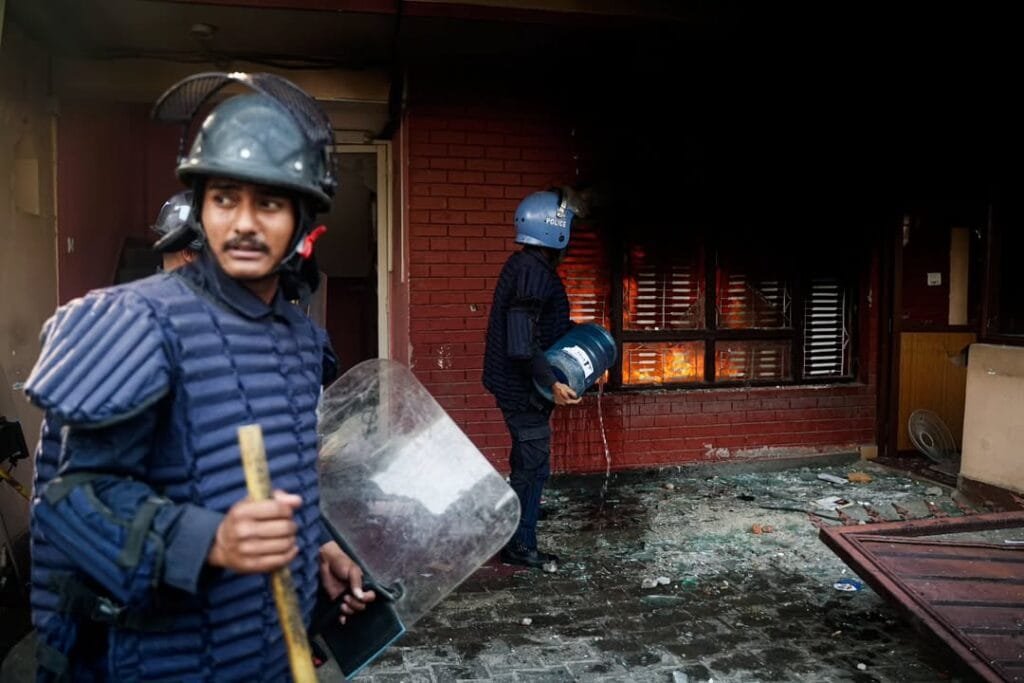
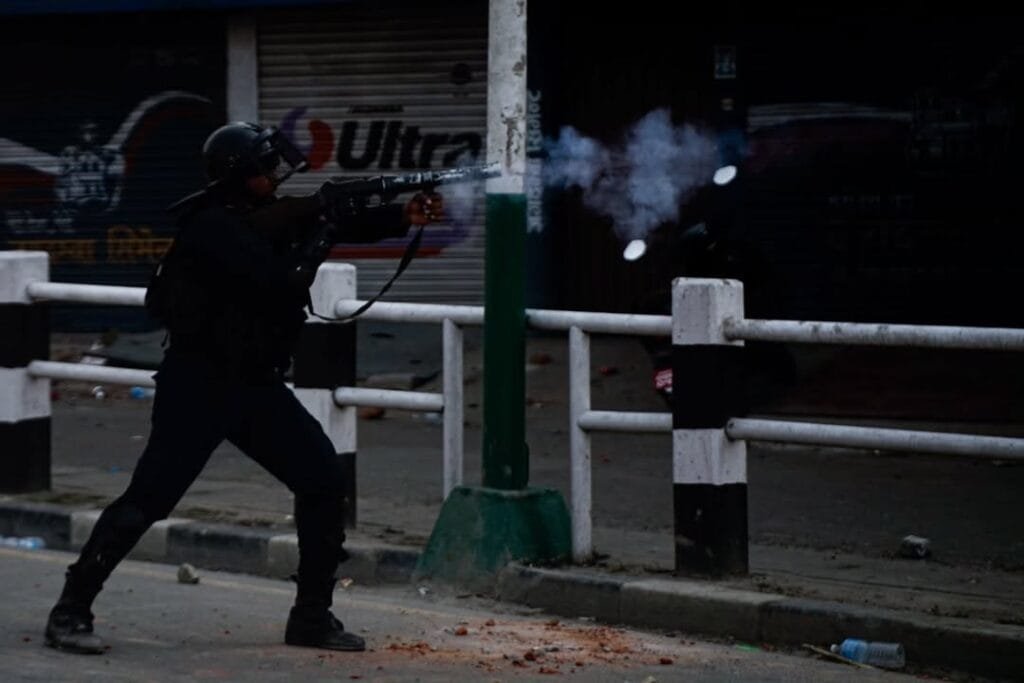
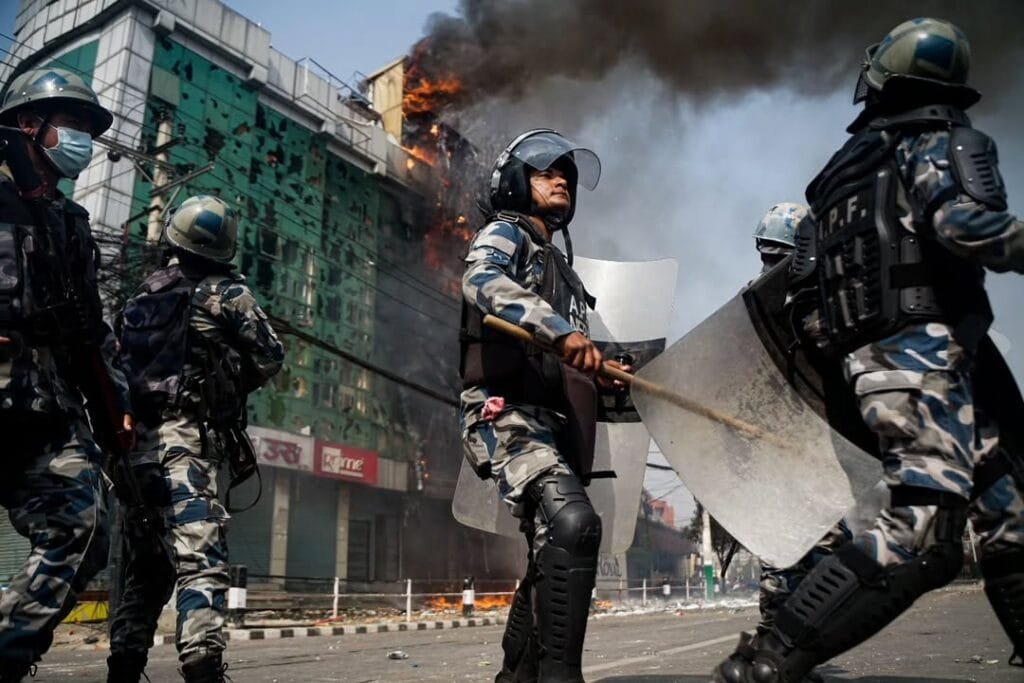
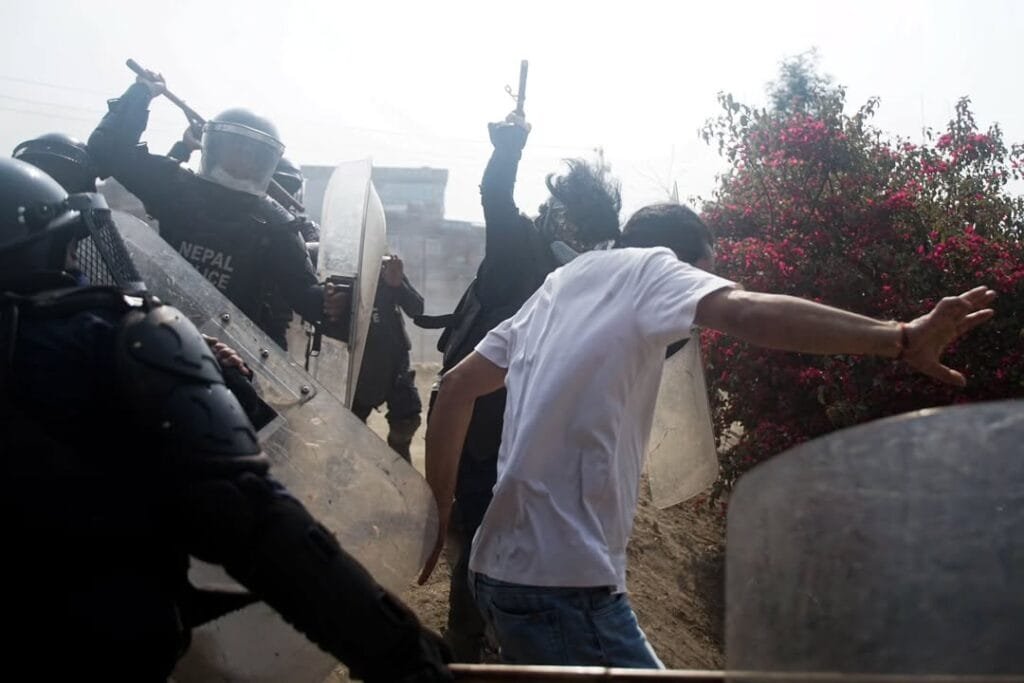
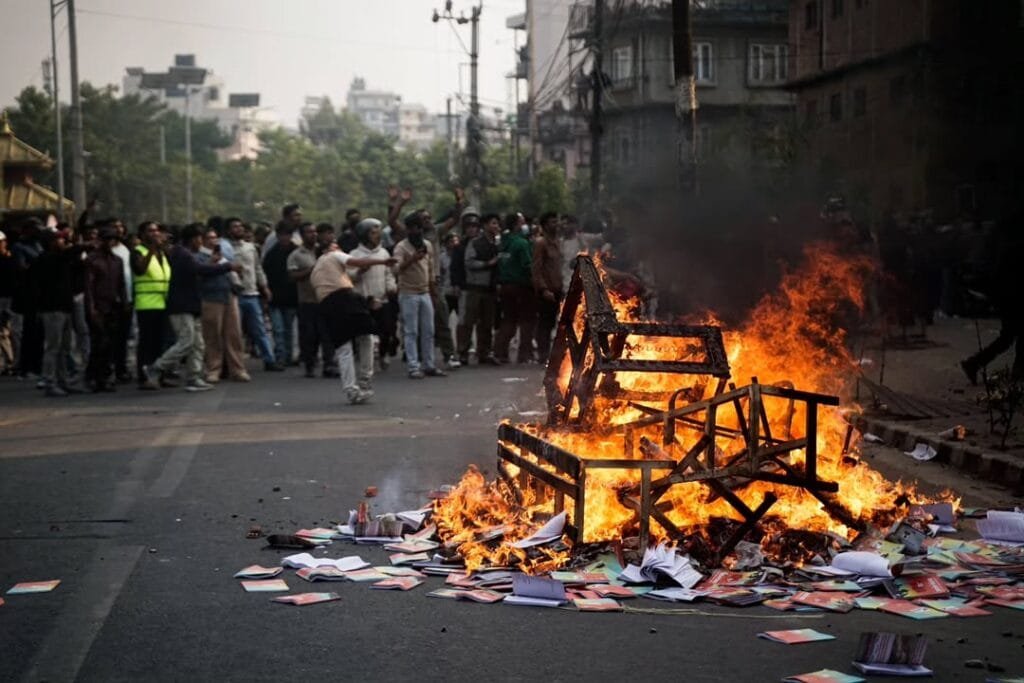
Government Response and Policy Changes
Initial Crackdown
The government’s initial response involved:
- Deployment of police forces with riot control equipment
- Use of tear gas and rubber bullets against protesters
- Attempts to maintain the social media ban
Policy Reversals
Facing mounting pressure, the government has:
- Lifted the social media ban
- Acknowledged public grievances
- Initiated dialogue with protest representatives
Political Consequences
The crisis has led to significant political ramifications, including reports of the Prime Minister’s resignation due to the unrest.
International Reactions and Concerns
Regional Implications
Nepal’s instability affects broader South Asian security and economic cooperation, given its strategic location between India and China.
Democratic Concerns
International observers have expressed concern about:
- Freedom of expression restrictions
- Use of force against peaceful protesters
- Democratic backsliding in the region
Economic Impact on Tourism
Nepal’s vital tourism industry faces potential disruption due to safety concerns and negative international coverage.
Comparing Nepal’s Crisis to Global Movements
Similarities with Other Youth-Led Protests
Nepal’s riots share characteristics with recent global movements:
- Arab Spring uprisings
- Hong Kong pro-democracy protests
- Iranian women’s rights demonstrations
- Sri Lankan economic protests
Unique Aspects
Nepal’s situation differs in:
- Geographic isolation and limited international attention
- Complex ethnic and linguistic dynamics
- Transitional democracy still consolidating institutions
Economic Roots of Discontent
Youth Unemployment Crisis
Nepal faces significant challenges in youth employment:
- Limited industrial development
- Brain drain as educated youth migrate abroad
- Agricultural sector unable to absorb growing workforce
- Service sector growth insufficient for job creation
Development Challenges
Key obstacles to Nepal’s economic progress include:
- Geographic constraints limiting trade
- Inadequate infrastructure development
- Dependence on remittances from overseas workers
- Climate change impacts on agriculture
The Role of Social Media in Modern Protests
Digital Organizing Tools
Social media platforms serve crucial functions in contemporary movements:
- Rapid information dissemination
- Coordination of protest activities
- Documentation of government actions
- International awareness building
Government Control Attempts
The Nepal case illustrates global trends in government responses to digital activism:
- Internet shutdowns as crowd control measures
- Platform regulation as speech restriction
- Digital surveillance concerns
Looking Forward: Potential Outcomes and Solutions
Short-term Scenarios
Possible immediate developments include:
- Continued negotiations between government and protesters
- Further political leadership changes
- Gradual restoration of normal activities
Long-term Reform Needs
Sustainable solutions require addressing:
- Systemic corruption through institutional reforms
- Youth unemployment via economic development programs
- Political representation through electoral reforms
- Digital rights through clear regulatory frameworks
Regional Stability Considerations
Nepal’s resolution of this crisis impacts:
- South Asian regional cooperation
- Democratic consolidation efforts
- Economic development partnerships
- Cross-border security concerns
Lessons for Democracy and Governance
Democratic Resilience
The Nepal crisis offers insights into:
- Importance of responsive governance
- Role of youth in democratic renewal
- Limits of authoritarian measures in digital age
- Need for inclusive political systems
Technology and Governance
Key learnings include:
- Social media’s power in political mobilization
- Challenges of regulating digital platforms
- Importance of digital rights protection
- Balance between security and freedom
Conclusion
The Nepal riots of 2025 represent a pivotal moment in the country’s democratic journey. What began as protests against social media restrictions has revealed deeper frustrations with governance, corruption, and economic opportunities. The youth-led nature of these demonstrations signals a generational shift in Nepalese politics, with young citizens demanding greater accountability and responsiveness from their leaders.
The government’s initial heavy-handed response and subsequent policy reversals demonstrate the challenges facing traditional political institutions in addressing contemporary grievances. As Nepal works toward resolution, the international community watches closely, recognizing that the outcome will influence democratic development throughout South Asia.
The path forward requires genuine dialogue between government and citizens, comprehensive reforms addressing corruption and economic stagnation, and a commitment to protecting democratic freedoms including digital rights. Only through such efforts can Nepal emerge from this crisis stronger and more united.
The events unfolding in Nepal serve as a reminder that democracy requires constant nurturing and that young voices demanding change cannot be ignored. As the situation continues to evolve, the resilience of Nepal’s democratic institutions and the wisdom of its leaders will be tested, with implications extending far beyond the Himalayan nation’s borders.
Discover more from Sanatan Roots
Subscribe to get the latest posts sent to your email.



